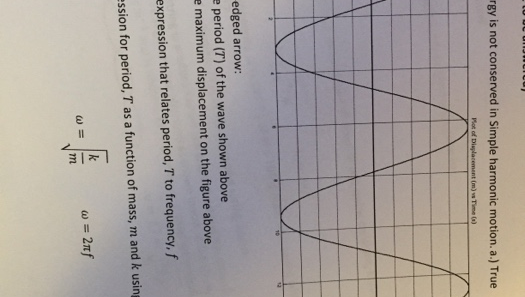Energy conservation is akin to nurturing a fragile ecosystem; every small action reverberates through the grand tapestry of our environment. In both homes and workplaces, this responsibility is not merely an obligation but an opportunity to foster sustainability and promote efficiency. Through a blend of innovative techniques and simple adjustments, we can effectively reduce energy consumption and, in turn, alleviate the strain on our planet.
First and foremost, an astute examination of our heating and cooling systems unveils substantial potential for energy savings. The thermostat serves as the nerve center for regulating temperature. Adjusting the thermostat by just a couple of degrees can lead to a dramatic decrease in energy use. In winter, setting the thermostat to 68°F (20°C) during the day and slightly lower at night can be remarkably effective. Summertime holds its own set of challenges; however, keeping the air conditioner at a modest 78°F (26°C) can significantly reduce cooling costs. Moreover, integrating programmable or smart thermostats can automate these adjustments, ensuring optimal heating and cooling patterns without constant manual intervention.
Windows, often overlooked, are integral conduits of energy flow. A well-sealed window can serve as a robust guardian against temperature fluctuations. Installing energy-efficient windows, which are designed with multiple panes and gas fills to minimize thermal transfer, can drastically cut heating and cooling demands. For those who are not ready for a complete remodeling, simply applying window films or using thermal curtains can yield impressive results at a fraction of the cost. During sweltering summers or frigid winters, these subtle additions can act as a formidable barrier against unwanted energy loss.
Another vital aspect of energy conservation lies in lighting. The evolution of lighting solutions has brought forth an array of options that prioritize efficiency without sacrificing ambience. Fluorescent and LED bulbs consume considerably less energy than traditional incandescent bulbs. In fact, LED bulbs use approximately 75% less energy and can last up to 25 times longer than their incandescent counterparts. Additionally, employing motion sensors in less frequented areas, such as hallways and restrooms, can illuminate spaces only when necessary, further minimizing wasted energy. This shift from ubiquitous lighting to adaptive illumination transforms mere bulbs into guardians of energy conservation.
In a rapidly digitalizing world, the electronics we use daily flicker with significant energy hunger. Unbeknownst to many, devices continue to draw electricity even when turned off—a phenomenon known as “phantom load.” To curb this insidious energy drain, employing power strips with an on/off switch is essential. Simply unplugging devices when not in use or using smart power strips that detect inactivity can lead to substantial energy savings. Moreover, ensuring devices are Energy Star rated not only guarantees a lower energy footprint but often coincides with higher overall performance.
In the workplace, cultivating a culture of energy awareness is paramount. Encouragement from management can instigate behavior that embodies energy efficiency. Simple practices such as turning off lights in empty rooms, utilizing natural light during daylight hours, and encouraging electronic document management can transform office dynamics. Additionally, creating a designated ‘green team’ can foster camaraderie and collective responsibility, leading to innovative ideas for further energy savings.
Appliance efficiency deserves careful consideration as well. When selecting new appliances, it is imperative to look for the Energy Star label which signifies adherence to stringent energy efficiency guidelines. These appliances are designed to consume less energy without compromising functionality. Regular maintenance of existing appliances, such as cleaning filters and ensuring seals are intact, can ensure they operate efficiently. For instance, regular cleaning of refrigerator coils helps the appliance run smoothly, requiring less energy to maintain optimal temperatures.
Water heating often represents a gargantuan portion of energy usage in both residential and commercial settings. Adjusting the water heater temperature to a comfortable yet conservative 120°F (49°C) can significantly enhance energy savings. Insulating hot water tanks, as well as the pipes leading from them, minimizes heat loss, ensuring hot water remains hot without excessive energy expenditure. Additionally, investing in a solar water heater can yield not only cost savings but also an eco-friendly solution. Drawing on the sun’s unyielding energy bank, solar water heaters epitomize a sustainable choice that ultimately contributes to a greener future.
Moreover, engaging in mindful consumption practices can amplify energy conservation efforts. The cumulative impact of individual actions creates ripples of change; choosing local products, reducing single-use plastics, and even composting organic waste can substantially lessen the overall carbon footprint. Encouraging a plant-based diet can also play an enormous role in conserving energy, as the production of meat and dairy requires significantly more resources and energy compared to plant alternatives.
Lastly, fostering a sense of community can catalyze broader energy conservation initiatives. Collaborating with neighbors and local organizations to share resources, ideas, and strategies can unleash collective power. Community gardens, local energy cooperatives, and group purchasing programs for energy-efficient technologies can forge connections and enhance the overall efficacy of individual efforts. Embracing community spirit transforms individual actions into a symphony of sustainability that resonates throughout the neighborhood.
In conclusion, the journey toward energy conservation is akin to weaving a cohesive narrative where every character—the thermostat, light bulb, appliance, and individual—plays a critical role. By harnessing an arsenal of strategies and cultivating mindfulness, we can significantly diminish energy consumption in our homes and workplaces. This conscious effort not only elevates our immediate environment but also resonates on a global scale, proving that when it comes to conserving energy, each action matters—meticulously crafting a future where sustainability prevails. Through concerted effort and shared responsibility, we can illuminate a pathway toward a more sustainable tomorrow.








